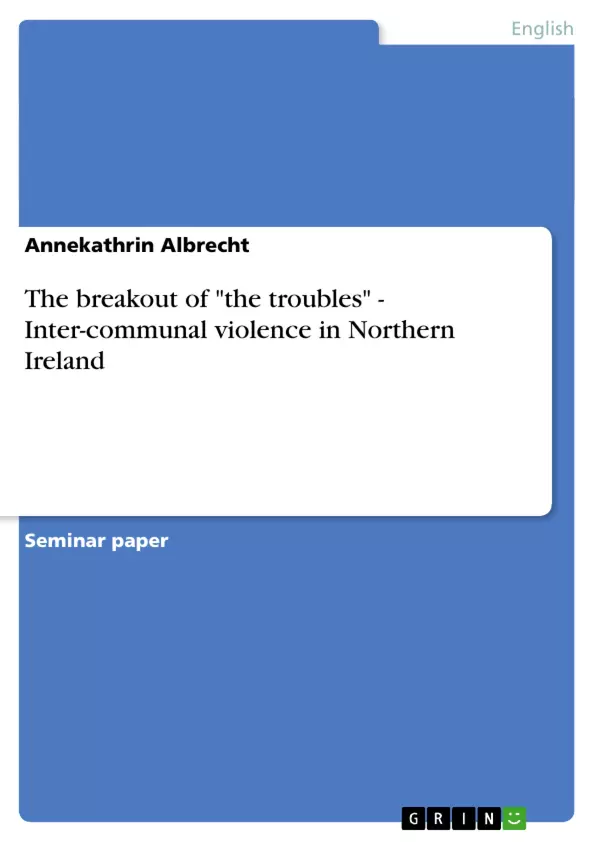The origins of the conflict in Northern Ireland are various and can be traced back to the seventeenth century. In the following work I explore the period from the late 1960s to the early 1970s with focus on the segregation issue of the Protestant and Catholic communities, its settings and reasons. Furthermore the social cohesion of the paramilitary groups and “their” communities is a discussed aspect. The conflict in Northern Ireland has a complex and deeply rooted history. My intention in writing about the start-up period of the inter-community violence in Northern Ireland was to give a deeper insight into this structure.
Following the statements of sociologists, the violence in Northern Ireland can be regarded as ”a surface expression of ‘deeper’ socio-economic and/or ideological contexts.” Hence the outbreak of rioting in the late 1960s can be considered as a desperate attempt of an oppressed minority to acquit itself from a discriminating majority. Violence in Northern Ireland was a cycle of provocation and reaction, of misunderstanding and discrimination. It is a matter of fact that violence provokes violence in turn and that prejudices are handed over from one generation to the following generation. Cumulative factors to the violence were, inter alia, the direct involvement of British troops, a Northern Irish police force which was biased against Catholics, provocations running out from the opposing camps and a British security-policy, primarily directed against Catholics, which seemed to be the case especially at the beginning of the conflict.
The following work contains an overview about the historical origins of the conflict and a description of the main conflict parties inclusive the paramilitaries and leads then to the outbreak of “the Troubles” and the first years of violence. The last chapter explores some facts of the segregation between Protestant and Catholic communities.
Inhaltsverzeichnis (Table of Contents)
- Introduction
- Historical Background and the origins of the conflict
- The main conflict parties
- The Outbreak of “The Troubles” and first years of rioting
- The Spatial Question - The segregation of the Communities
- Conclusion
Zielsetzung und Themenschwerpunkte (Objectives and Key Themes)
This work examines the period of inter-communal violence in Northern Ireland, focusing on the segregation issue between Protestant and Catholic communities. The author analyzes the social cohesion of paramilitary groups and their communities. The work aims to provide a deeper understanding of the conflict’s complex structure and the roots of the violence.
- The historical background and origins of the conflict in Northern Ireland
- The role of social and economic factors in fueling the violence
- The dynamics of the conflict between Protestant and Catholic communities
- The impact of paramilitary groups on the social fabric of Northern Ireland
- The segregation of communities and its consequences.
Zusammenfassung der Kapitel (Chapter Summaries)
The first chapter explores the historical roots of the conflict in Northern Ireland, tracing it back to the seventeenth-century settlement of English and Scottish Protestants in Ulster. The chapter discusses the “plantation of Ulster,” which led to the displacement of native Irish Catholics and the establishment of a British Protestant dominance. The second chapter delves into the main conflict parties, including the Catholic-Republican-Nationalist camp, the Protestant-Loyalist-Unionist camp, and the United Kingdom. The chapter examines the political and paramilitary organizations that represented these camps and their respective ideologies.
Schlüsselwörter (Keywords)
The key themes and concepts of this work include the historical origins of the conflict in Northern Ireland, the dynamics of inter-communal violence, the role of paramilitary groups, the spatial question of community segregation, and the socio-economic factors that contributed to the outbreak of “the Troubles.”
- Quote paper
- Annekathrin Albrecht (Author), 2007, The breakout of "the troubles" - Inter-communal violence in Northern Ireland, Munich, GRIN Verlag, https://www.grin.com/document/89669



